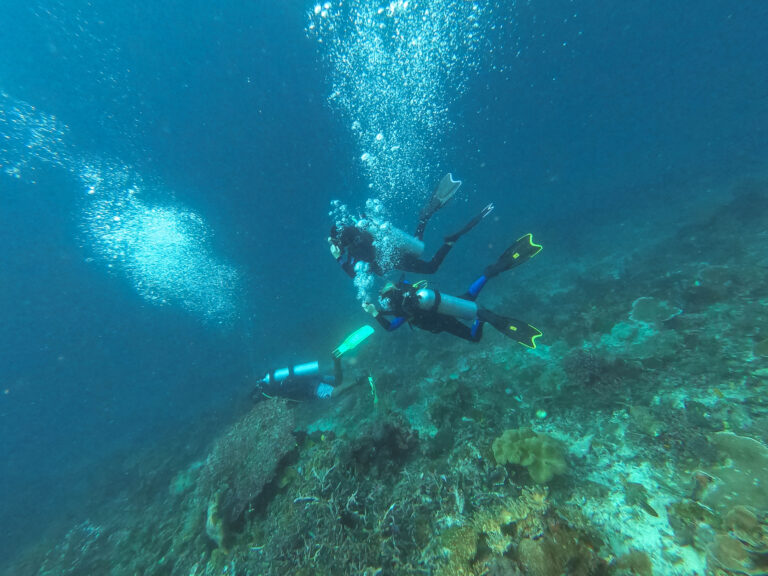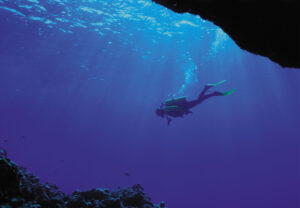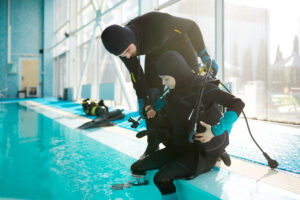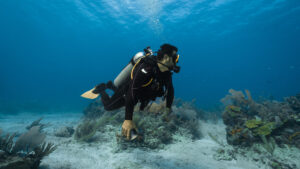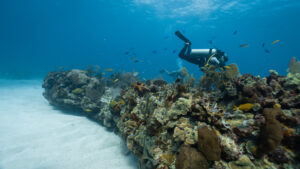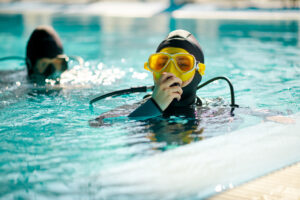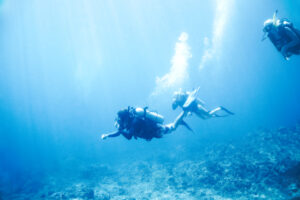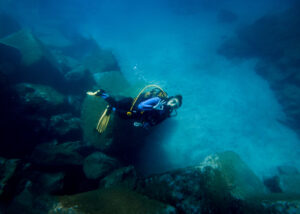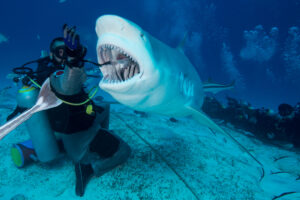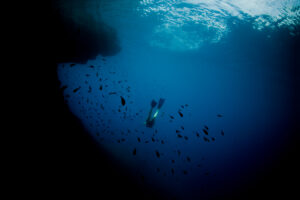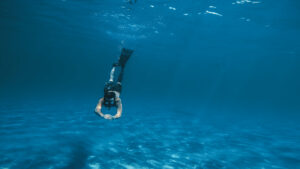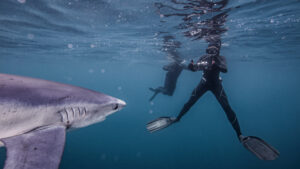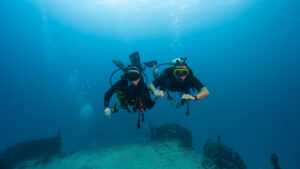What is Pressure?
Pressure is a fundamental concept in physics, defined as the force exerted per unit area. In the context of scuba diving, understanding pressure and its effects is crucial for safety and efficiency. Pressure plays a pivotal role in determining how divers experience the underwater environment, affecting everything from breathing to buoyancy. As divers descend into the water, the pressure increases, impacting both their equipment and bodies in significant ways. This article will discuss the principles of pressure, its effects on the human body, the health risks associated with changes in pressure, techniques for managing these changes, and the equipment designed to withstand them.
Physical Principles of Pressure
Pressure, a core concept in physics, is calculated as force divided by the area over which it is applied. Mathematically, this is expressed as P = F/A, where P stands for pressure, F for force, and A for the area. This basic principle helps explain how pressure operates both in the air and underwater. At sea level, the atmospheric pressure is approximately 1 atmosphere (atm), equivalent to 101.3 kPa. As one descends underwater, pressure increases by about 1 atm for every 10 meters (32.8 feet) of depth due to the weight of the water above.
Water pressure is significantly higher than atmospheric pressure due to water’s density, which is about 800 times greater than that of air. This increase in pressure can be described using the concept of absolute pressure, which combines atmospheric pressure and water pressure. Absolute pressure is crucial for divers as it influences both the volume and pressure of gases within the body and diving equipment. Boyle’s Law, which states that the volume of a gas is inversely proportional to its pressure, is particularly relevant. According to this law, as a diver descends and the pressure increases, the volume of air in their lungs and equipment decreases.
Understanding the relationship between pressure, volume, and depth is essential for safe diving practices. It not only affects breathing but also buoyancy control and the functionality of diving gear. Divers must be aware of these principles to avoid potentially dangerous situations caused by rapid changes in pressure, such as barotrauma or decompression sickness. Knowledge of these physical principles forms the foundation for comprehending more complex aspects of diving safety and physiology.
Effects of Water Pressure on the Body
The human body, while adaptable, undergoes significant changes under increased water pressure. One of the most immediate effects is on the respiratory system. As a diver descends, the increased pressure compresses the air in the lungs, which, according to Boyle’s Law, reduces their volume. This compression requires divers to take shallower, more frequent breaths to maintain adequate oxygen levels. Furthermore, the increased pressure affects the solubility of gases in the blood, which can lead to nitrogen narcosis or “rapture of the deep” at greater depths.
Nitrogen narcosis occurs because the increased pressure causes more nitrogen to dissolve into the bloodstream, affecting the central nervous system. Symptoms can range from mild euphoria and impaired judgment to severe confusion and loss of consciousness, depending on the depth and duration of the dive. While typically reversible upon ascent, it highlights the importance of understanding and respecting pressure limits.
Another significant effect of water pressure is the risk of decompression sickness, also known as “the bends.” As divers ascend and pressure decreases, nitrogen dissolved in the blood can form bubbles if the ascent is too rapid. These bubbles can cause joint pain, dizziness, paralysis, and even death if not managed properly. Divers mitigate this risk by ascending slowly and performing safety stops to allow excess nitrogen to be safely expelled from the body.
Barotrauma is another pressure-related injury, occurring when the pressure difference between the inside and outside of the body causes tissue damage. Commonly affected areas include the ears, sinuses, and lungs. Equalizing techniques, such as swallowing or gently blowing against pinched nostrils, help to balance pressure and prevent barotrauma. Understanding these physiological effects of pressure is essential for preventing injury and ensuring a safe diving experience.
Pressure-Related Health Risks in Scuba Diving
Scuba diving presents several health risks directly related to changes in pressure. Decompression sickness (DCS) is perhaps the most well-known. This condition arises when nitrogen absorbed into the bloodstream at depth forms bubbles during a rapid ascent. These bubbles can cause severe joint pain, neurological symptoms, and, in extreme cases, death. Preventing DCS involves careful dive planning, including controlled ascents and decompression stops to allow the body to safely off-gas the absorbed nitrogen.
Nitrogen narcosis is another risk, typically occurring at depths greater than 30 meters (98 feet). At these depths, the increased partial pressure of nitrogen can impair cognitive and motor functions, leading to poor decision-making and increased risk of accidents. While the effects of nitrogen narcosis are temporary and diminish upon ascent, divers must be aware of their depth and limit their exposure to avoid impairment.
Barotrauma, resulting from pressure differentials between body compartments and the external environment, can affect various parts of the body. Middle ear barotrauma is the most common, caused by a failure to equalize pressure in the middle ear space during descent. This can lead to pain, hearing loss, and in severe cases, a ruptured eardrum. Pulmonary barotrauma can occur during an uncontrolled ascent, leading to lung over-expansion and potentially life-threatening injuries such as arterial gas embolism.
Oxygen toxicity is another concern, particularly for technical divers using enriched air or mixed gases. At high partial pressures, oxygen can become toxic, leading to convulsions and unconsciousness underwater. Managing oxygen exposure involves adhering to maximum operating depths for specific gas mixtures and limiting time at depth to avoid reaching toxic levels.
To mitigate these risks, divers must be thoroughly trained in pressure management techniques and the use of dive computers and tables. Understanding the symptoms of pressure-related conditions and taking preventive measures is crucial for safe diving practices. Proper education and adherence to safety protocols significantly reduce the incidence of pressure-related health issues.
Managing Pressure in Dive Planning
Effective dive planning is essential for managing the risks associated with pressure changes. One of the primary tools divers use is the dive table or dive computer, which helps plan dive profiles to avoid decompression sickness. These tools calculate safe limits for depth and time, taking into account previous dives and surface intervals. By following these guidelines, divers can manage their nitrogen absorption and reduce the risk of DCS.
Controlled ascents are another critical aspect of managing pressure. Divers should ascend no faster than 18 meters (60 feet) per minute to allow the body to gradually expel absorbed gases. Performing safety stops, typically at 5 meters (15 feet) for three to five minutes, further aids in this process. These stops provide an extra margin of safety by allowing additional time for nitrogen to off-gas from tissues.
Equalization techniques are vital for preventing barotrauma. Divers need to equalize the pressure in their ears and sinuses frequently during descent. Methods such as swallowing, yawning, or performing the Valsalva maneuver (gently blowing against pinched nostrils) help to equalize internal and external pressures. Regular practice of these techniques ensures they become second nature and prevent discomfort and injury.
Dive computers have revolutionized dive planning by providing real-time data on depth, time, and decompression status. These devices continuously monitor a diver’s profile and alert them to potential risks. They also allow for more flexibility compared to traditional dive tables, enabling divers to make adjustments on the fly based on actual dive conditions. Using dive computers enhances safety by providing accurate and immediate information to manage pressure changes effectively.
Overall, proper dive planning and the use of technology are critical for safely managing the pressures encountered underwater. Divers must be diligent in adhering to guidelines and utilizing available tools to minimize the risks associated with pressure changes. By doing so, they can enjoy a safer and more enjoyable diving experience.
Equipment and Pressure
Scuba diving equipment is designed to handle the extreme pressures encountered underwater. The most critical piece of equipment is the regulator, which reduces high-pressure air from the tank to a breathable pressure. Modern regulators are designed to deliver air smoothly at any depth, adjusting automatically to the surrounding water pressure. This ensures that divers can breathe easily and comfortably regardless of their depth.
Buoyancy control devices (BCDs) are another essential component of a diver’s gear. BCDs allow divers to control their buoyancy by adding or releasing air from an inflatable bladder. This is crucial for maintaining neutral buoyancy, enabling divers to remain at a desired depth with minimal effort. Proper use of a BCD helps divers manage their ascent and descent rates, reducing the risk of decompression sickness and barotrauma.
Dive suits, whether wetsuits or drysuits, provide thermal protection and help manage buoyancy. Wetsuits are made from neoprene, which traps a thin layer of water between the suit and the body. This water is warmed by body heat, providing insulation. Drysuits, on the other hand, keep the diver completely dry by using airtight seals. They are often used in colder waters and can be adjusted with additional layers of insulation.
Pressure gauges and depth meters are vital for monitoring a diver’s environment. A pressure gauge shows the remaining air supply in the tank, allowing divers to plan their dive and return to the surface with a safe reserve of air. Depth meters, often integrated into dive computers, provide real-time information on the diver’s depth, helping to manage decompression obligations and avoid exceeding safe limits.
Dive computers have become an indispensable tool for modern divers. These devices track depth, time, and decompression status, providing real-time feedback on a diver’s profile. They calculate safe ascent rates and required decompression stops, enhancing safety and allowing for more efficient dive planning. The integration of these technologies into diving equipment underscores the importance of managing pressure for a safe underwater experience.
Overall, diving equipment is intricately designed to withstand and manage the pressures of the underwater environment. Proper use and maintenance of this equipment are crucial for ensuring a safe and enjoyable dive. Understanding the functionality and limitations of each piece of gear helps divers navigate the challenges posed by pressure effectively.
Key Takeaways
Understanding pressure and its effects is essential for safe scuba diving. From the physical principles of pressure to its impact on the body and the associated health risks, managing pressure is crucial. Proper dive planning, the use of advanced equipment, and adherence to safety protocols are vital in mitigating the risks posed by pressure changes. Through education and careful practice, divers can ensure a safe and enjoyable underwater experience.

